General Skilled Migration
The General Skilled Migration program is a points & invite based visa pathway for skilled individuals or families looking to migrate to Australia to fill skills gaps in the Australian economy.
Benefits of a general skilled migration visa (GSM)
Unrestricted Work Rights
Study Rights
Pathway to Permanent Residency
Access to Medicare
Does not require employer sponsorship
Allows for unlimited travel in and out of Australia
Do you qualify FOR A GENERAL SKILLED MIGRATION VISA?
Please answer the below section to check your eligibility for General Skilled Migration:
Types of General Skilled Migration Visas
189 Visa
This permanent residency visa allows skilled workers to work, live and study in Australia. It does not require employer/state/territory sponsorship but requires a minimum of 65 points to become eligible to be invited to apply for the visa.
190 Visa
This permanent residency visa allows skilled workers nominated by an Australian state or territory government to live and work in Australia indefinitely. You must have a state or territory to sponsor you and have a score of at least 65 points to be eligible to be invited to apply for the visa.
491 Visa
This temporary visa allows skilled migrants to live, work and study in a designated regional area of Australia for five years. You must achieve a score of at least 65 points in your expression of interest and be nominated by an eligible relative living in a designated area, or an Australian state/territory, to be invited to apply for this visa. Subclass 491 visa holders can apply for a permanent residency visa after three years from when the 491 visa is granted.
General Skilled Migration Timeline
The below timeline outlines the steps for you to be able to achieve permanent residency through the general skilled migration pathway:
Step 1
Identify your Occupation from the Skilled Occupation List
Step 2
Understand your visa options
Step 3
Check your Eligibility
Step 4
Complete your Skills Assessment
Step 5
Apply for Expression of Interest
Step 6
Apply for State/Territory Nomination
Step 7
Wait for an Invitation
Step 8
Apply for Visa
What is the Skilled Occupation List?
The skilled occupation list of Australia is a list of occupations Australia needs to fill skill shortages. Australia has three skilled occupation lists:
MLTSSL
Medium and Long-term Strategic Skills List (MLTSSL)
The MLTSSL is relevant to individuals who apply for visas under any Skilled Migrant Category. The three Skilled Migrant visas that fall under the MLTSSL are the following:
- Skilled Independent visa (subclass 189)
- Skilled Nominated visa (subclass 190)
- The Skilled Work Regional (Provisional) visa (subclass 491)
STSOL
Short-term Skilled Occupation List (STSOL)
The STSOL is relevant to individuals who have secured a state or territory nomination to apply for one of the below visas:
- Skilled Nominated visa (subclass 190):
- The Skilled Work Regional (Provisional) visa (subclass 491)
STSOL List is not eligible for the Subclass 189 visa pathway.
ROL
Regional Occupation List (ROL)
The ROL applies to skilled migrants applying for a regional visa nominated by a state, territory, or regional employer.
There is only one relevant visa under the ROL via GSM:
Steps to Applying for General Skilled Migration
Skills Lists & Nominated Occupation
Each category of the Skilled Occupation List contains a list of occupations under it. The first step to achieving permanent residency through General Skilled Migration is correctly identifying the occupation you fall under from the skilled occupation list.
To be considered under a particular occupation, you must meet the requirements outlined as per its corresponding ANZSCO code. ANZSCO Code dictates the required skill level for each occupation needed to apply for General Skilled Migration.
At Augustine and Co, we can assist you with identifying the correct occupation based on your skills, qualifications, and work experience. You may be eligible for more than one occupation on the list. In this case, we can advise you if one occupation is preferable to the other in achieving permanent residency.
Understand your Visa Options
Once you identify your occupation, we will then assist with identifying all the available visa pathways available to you. Based on your skills, qualifications, and work experience, you may also be eligible for other visa pathways, which we will recommend during your consultation session.
Check your Eligibility
During your consultation session, we will calculate your Skilled Migration Points to see if you are eligible for the Skilled Migration Program.
Complete your Skills Assessment
Occupations in each list have their own skills assessing authority. A skills assessment authority checks whether your skills meet the standards to work in a relevant occupation. Applicants for General Skilled Migration must have a positive skills assessment for their nominated occupation.
Many skills assessing bodies have stringent criteria when applying for skills assessment. Hence, we recommend that you consult with us prior to applying for Skills Assessment,
We can assist in:
- Ensuring you meet the eligibility criteria
- Provide a checklist of specific documentation that you need to provide;
- Ensure all documents provided meet the requirements for the skills assessment.
If your skills assessment is refused, Augustine and Co. can assist you with:
- Appealing the decision.
- Applying for another skills assessment.
- Apply for a skills assessment for a closely related occupation
Lodge Expression of Interest
To be invited to apply for a skilled visa, you are required to submit an Expression of Interest (EOI) through Skill Select.
Apply for State / Territory Nomination
The independent skilled visa pathway is a competitive program. Therefore, to increase your chances, we recommend that you explore state and territory nominated pathways. In addition to the above GSM requirements, state and regional areas impose additional criteria that need to be satisfied.
These pathways and conditions may be difficult to navigate, and it is best to obtain professional advice by discussing your profile with our lawyers or registered migration agents so they can determine your eligibility and create a migration action plan for you and/or your family.
Wait for an Invitation
Once you have submitted an EOI, a registration of interest for a state nomination, or lodged a state nomination application, you may be invited to apply for a General Skilled Migration visa. You are not eligible to apply for a permanent visa without an invitation.
Apply for a Visa
Upon receiving an invitation to apply for a General Skilled Migration visa from the Department of Home Affairs, you have 60 days to lodge a visa application.
No, you need to be invited to apply for all General Skilled Migration visas.
You will need a minimum of 65 points to submit an expression of interest.
Yes, you can include members of your family unit, such as your spouse/partner and dependent children to your visa application.
The Department sets a limit, also known as an occupation ceiling, for each occupation category, on the number of skilled migrants invited per program year. If occupations reach their limit before the end of the financial year, no new invitations will be issued for skilled applicants until the following financial year.
Yes, once you have lodged your EOI, it is valid only for two years. You will need to re-lodge a new EOI, upon its expiry.
If you have not yet received an invitation, we suggest you amend your EOI with the correct information as soon as possible. If the Department has invited you and you go on to lodge the visa application based off points that you cannot evidence, the Department will most probably refuse your application. If you believe you have overinflated your points, get in touch with us, and we will advise you on the best way forward.
If your current visa (substantive or bridging visa) does not have a condition that restricts you from working, you can work in Australia.
Current processing Time OF GENERAL SKILLED MIGRATION VISAS
The general processing times set by the Department for General Skilled Migration are as follows:
Subclass 189
75% of applications: 17 months
90% of applications: 28 months
Subclass 190
75% of applications: 4 months
90% of applications: 15 months
Subclass 491
75% of applications: 24 months
90% of applications: 31 months
Individual processing times for any given application may vary depending on an applicant’s specific circumstances, their country of origin, as well as the quality of the application lodged with the Department of Home Affairs, i.e., a decision ready application in compliance with all legislative and policy criteria.
General Skilled Migration Costs (2025)
- Skills Assessment Cost Varies
Paid directly to the relevant skills assessing authority.
- Expression of Interest Free
- State/Regional Nomination Cost Varies
Paid directly to the state you are seeking nomination from if applicable.
- GSM Visa Application AUD 4,770.00
Paid directly to the Department of Home Affairs at time of application: Visa application fee of $4,770.00 for the main applicant, $2,385.00 for any dependents over 18 and $1,190.00 for each dependent under 18.
- Medical Examination Approx AUD350
Paid directly to the panel clinic/hospital that undertakes the medical examination for the applicants.
- Police Checks Cost Varies
Paid directly to the relevant authorities that issue national/state level police/character checks for the applicants/sponsor.

Covid-19 Update
In response to the COVID-19 pandemic, The Department has introduced the ‘Priority Migration Skilled Occupation List’ (PMSOL). The list identifies 44 occupations that fill critical skills needs to support Australia’s economic recovery from COVID-19. General Skilled visa applicants having a nominated occupation on the PMSOL have also had their visas priority processed in recent months.
What Our Clients Think
We are most proud of our client relationships… Satisfied clients are the most important thing for us – so here’s what they have to say….





Disclaimer: The information on this website is for general information purposes only. Nothing on this site should be taken as legal advice for any individual case or situation. Further, this info is subject to constant change based on any changes in the law, and therefore, is not intended to create, and receipt or viewing does not constitute a solicitor-client relationship. The reader should consult with an immigration lawyer prior to lodging any application as each lawful case may be different.


